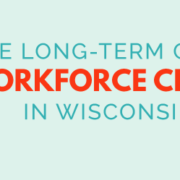Payroll Costs Rising from the Labor Shortage
Services are increasingly getting more expensive to provide thanks in part to ongoing labor woes, according to the latest Cost of Care Survey from insurer Genworth Financial.
The national median cost of home care pay shot up 6.17% to $21.50 per hour, or $4,099 per month, from 2016 to 2017. Among other care settings, this is the most pronounced increase. The cost of home care services, including household tasks, reached a median of $21 per hour, or $3,994 per month. This is a 4.75% increase from last year.
Over five years, the median cost growth rate was 2.5% for home health aide services and 3.08% for homemaker services.
This year’s cost increase was particularly notable, says Gordon Saunders, senior brand marketing manager for Genworth’s U.S. Life Insurance division. Overall, the annual median cost of long-term care services climbed an average of 4.5% from 2016 to 2017. It marks the second-highest yearly increase for nursing homes and home care since the study began in 2004.
“We have become accustomed to seeing steady increases in the cost of long-term care services, but this year, we saw a marked acceleration in the cost of home care over previous years,” Saunders told Home Health Care News. “This is based on external factors in the marketplace related to supply and demand: increasing demand for long term care services as our population ages versus shortage of workers and rising labor costs.”
By comparison, the national median cost for a one-bedroom unit in a private-pay assisted living community reached $3,750 per month, or $45,000 a year. That’s an increase of 3.36% from 2016 to 2017.
National median rates for semi-private room nursing home care increased 4.44% and hit $7,148 per month. Also, private room nursing home care reached $8,121 per month, a 5.50% increase.
Labor Woes Crank Up Costs
The labor shortage isn’t the only factor driving up costs, but it has impacted all care settings, says Saunders.
“[U.S. Dept. of Labor] changes have resulted in minimum wage and overtime protections to more domestic service workers who enable individuals with disabilities and the elderly to continue to live independently in their homes,” Saunders said. “Also contributing to the increase in labor costs is the Affordable Care Act (ACA), which requires employers of a certain size to offer some type of health insurance, or pay a penalty.”
For nursing homes, higher labor expenses and tightening Medicare rules have resulted in shorter hospital stays. Instead, sicker patients are sent to rehab nursing homes for shorter stays, driving up costs, Genworth noted.
Room and board for assisted living communities has risen to accommodate residents who are sick, but not sick enough to require nursing home care. Luxurious amenities commonly found in private pay communities also increased costs of care.
What Agencies Can Do About It
This eBook explains the factors driving the labor shortage, and how a two-pronged approach can minimize the costs for agencies.
Download the new eBook and check out the complete library of ebooks for agencies here.








 2018 MITC
2018 MITC 2018 MITC
2018 MITC
Leave a Reply
Want to join the discussion?Feel free to contribute!